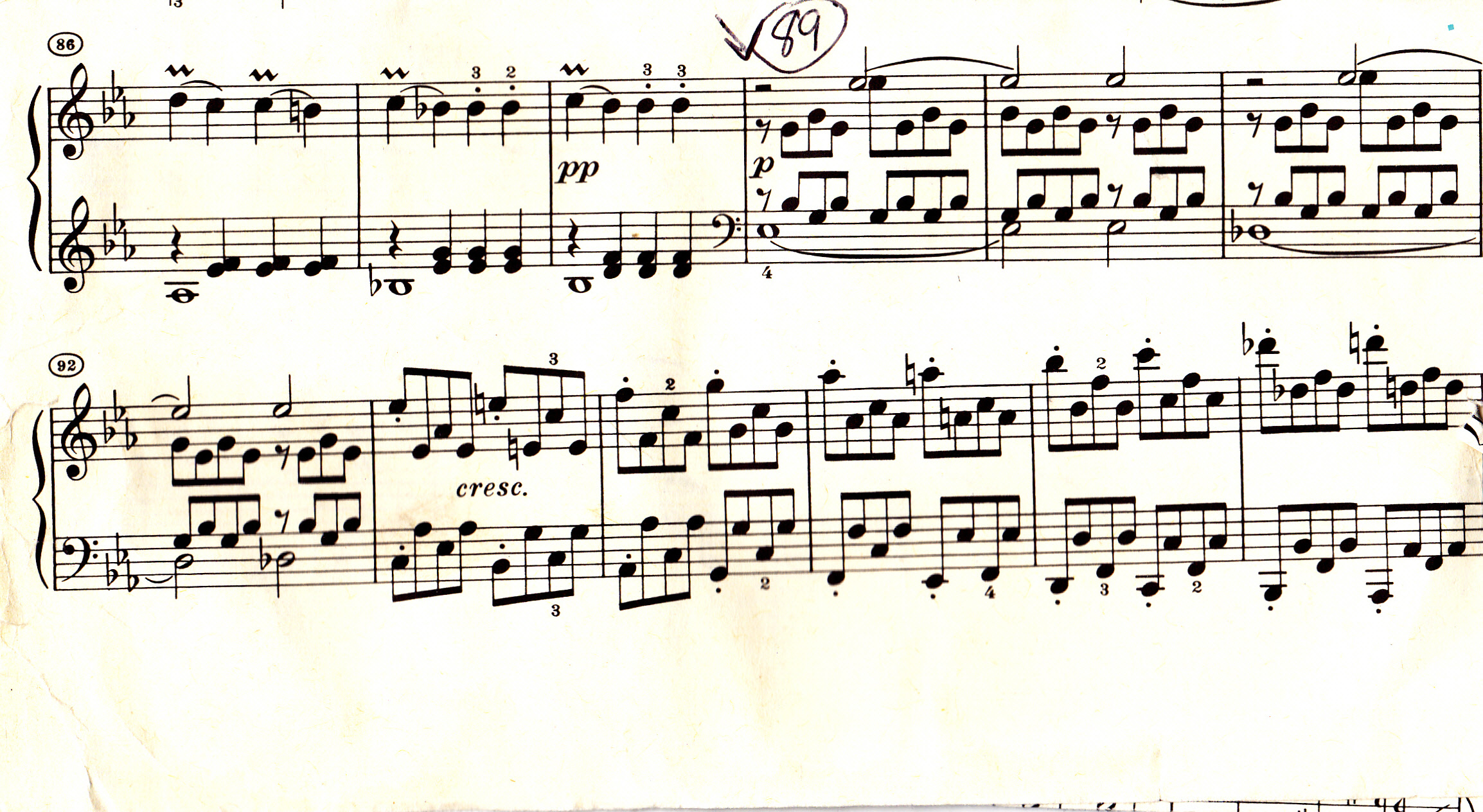(a) Statement saying: “I, Alyssa Casey, affirm that I completed my independent component which represents 30 hours of work.”
(b) Sources:
- Stacey Ulmer, mentor
- Thomas Nalbach , 4th Interview
- Lammers, Will. "Factors Affecting Performance Proficiency: A Case Study Involving Intermediate Piano Students." Department of Graduate and Undergraduate Studies in Education, Brock University (2006). Web. 2 Apr. 2014.
- Schoenberg, Arnold. Style and Idea. New York: Philosophical Library, Inc., 1950. Print. Pgs 153-180.
- Chueke, Zelia. "Stages of Listening During Preparation and Execution of a Piano Performance." University of Miami (2000). Web. 2 Apr. 2014.
(c) Provide a digital spreadsheet (aka log of the 30 hours).
Posted.
(d) For my independent component, I did three pieces for the piano. They were for the Talent Show, which was April 1st, and they were rather varied. One was a classical piece, another was an accompaniment for my own voice, and the other an accompaniment for another vocalist's voice. The thirty hours of work were mainly daily practice, especially with the accompaniment piece that was for another vocalist besides myself. That last piece I took different ways of playing it: by ear, by the written, set-in-stone sheet music with the notes, and also with the chord names that were written above the sheet music on the same page. I took to simply using the basic five chord pattern for that particular piece. As for the others, I mainly went by how they were written, and may have added more thematic elements when I performed them with more vigor and excitement.
INTERPRETIVE
Defend your work and explain how the significant parts of your component and how it demonstrates 30 hours of work. Provide evidence (photos, transcript, art work, videos, etc) of the 30 hours of work.
The work I did was mainly practicing and finding different methods of how not to become nervous while onstage. I took time to try listening to my material on the go repeatedly, so that if there were to come a moment that I forgot a passage, I could simply improvise because I would know what that passage was supposed to sound like. I tried different methods for multitasking, especially for when it came to accompanying my own singing voice. Playing as an accompanist for another singer or even as a classical soloist was very different than from what I was preparing for. At times, I felt that this self sustaining performance of me playing along with my voice was more difficult than executing Beethoven. I managed to perform well at the talent show, and received good reception overall.

A phrase from "Let It Go" by Kristen Anderson-Lopez and Robert Lopez, composed for the movie "Frozen."
Lyrics from "Let It Go."
Here's me (figuratively) hoping that I was confident enough about it.
"Read All About It" by Emeli Sande

First page of the sheets I found that thankfully had the guitar tabs and chord names (letters above the graph things that have letters such as Bm and Gmaj7).
Finally, there's this delicious piece.

Here is a passage where the first set of mordents is shown. The mordents force the pianist to move the right hand over the left as you are to play the staccato bass notes before jumping back into treble clef.

The part where the grave set piece becomes devilishly fast, with notes that play like sixteenths.

Second set of mordents after the fast bass notes that lead to the trills. This is in a different key than the first set of mordents.

Here is a part where the fast paced main theme leads into a slower paced passage with half notes that seem to quiet down, but then get louder, and get softer once more. You now are in the second set of mordents in E-Flat.

Here's a fun part where the first set of mordents dissipates into the slow, longer held half notes that builds up to the wrist rotating staccato parts that get louder each time, as mentioned where it says "cresc." meaning, get louder.

This page here, this very one was the most fun and the most painful. That sudden natural key change and then the melody shifting to the left hand. You gotta love it. Oh, the markings with "tr," those are the really fast and painstaking trills. Totally fun. Oh, they were played with my pinky and ring fingers.

My hand moving over for the first mordents that appear in the piece. Notice that my left is crossed under, playing the softer harmonic rhythm while my right hand is playing the melody.

My hands here are playing the Beethoven at the actual speed it was written at, which was Allegro di molto e con brio, which means "fast, with fire." Left me plenty of room for expression.
Talent Show pamphlet, with all three of my performance numbers under 2, 6, and 13.
APPLIED
How did the component help you answer your EQ? Please include specific examples to illustrate how it helped.
The component helped me answer my EQ because it helped me understand how much practice can really make a difference in the way a final performance goes. Although I admit I didn't do as much practice as I wished, the times I did made me realize that for most cases, it is best to get secondary help from others and to actually communicate with those you are working with, even if you have yet to complete your end of the deal. That is something I realized after not practicing with my partner for the song "Read All About It." The reason I didn't exactly meet up my partner was because I didn't want them to feel I wasn't ready or capable enough of assisting them.

No comments:
Post a Comment